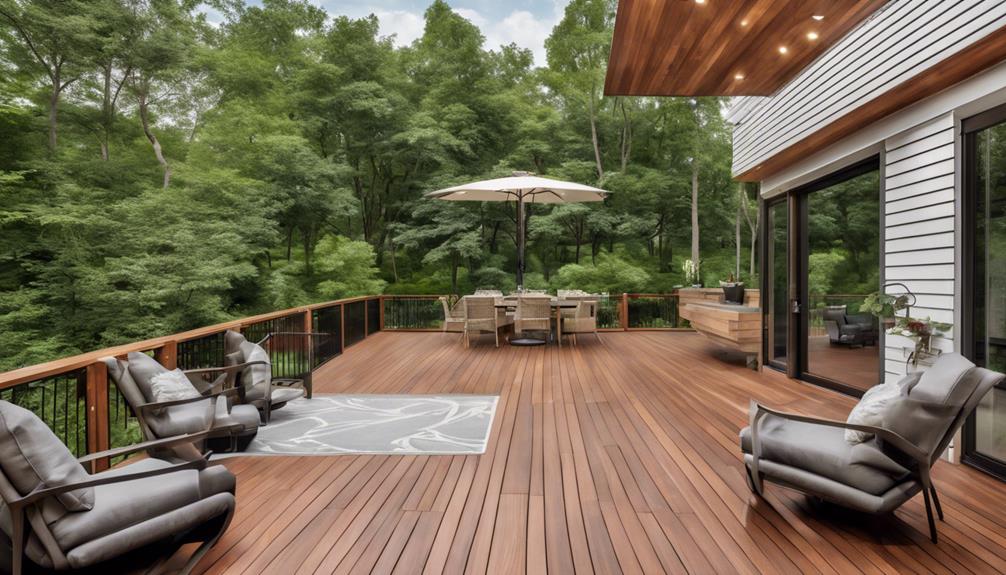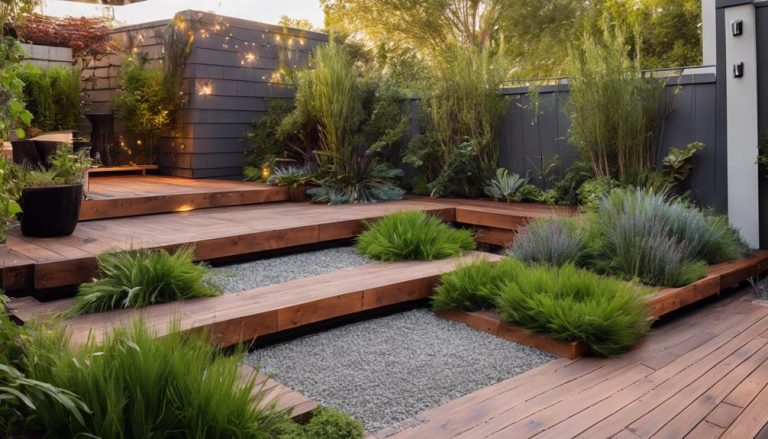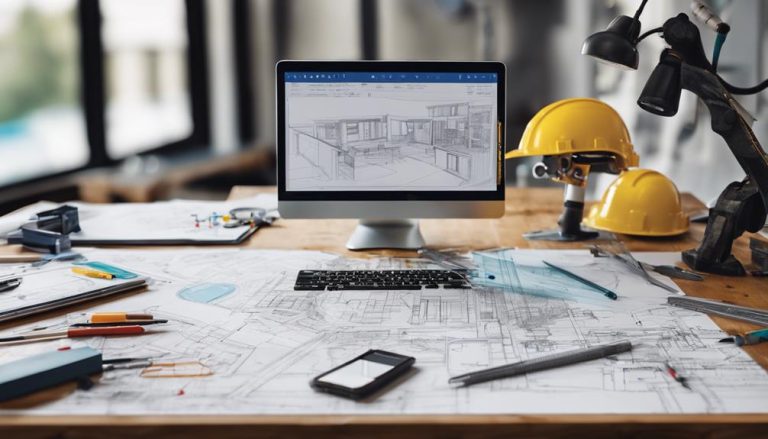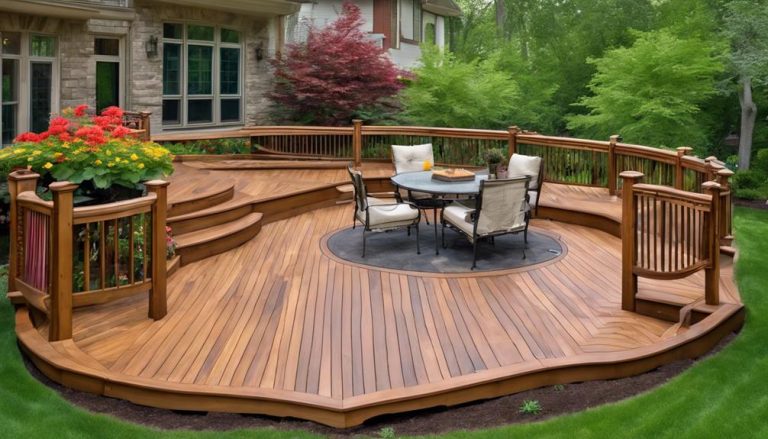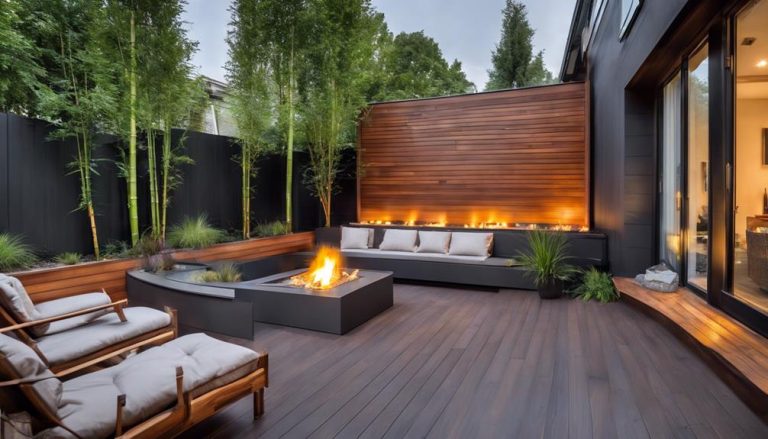Review of the Best Deck Design Software Available
The premier deck design software offers a robust array of features catering to varied user demands, ranging from intuitive 3D visualization and drag-and-drop interfaces to intricate cost estimation and material customization. Programs such as SketchUp, Deck Designer, and Chief Architect lead the market, each offering unique advantages; SketchUp stands out for its modeling versatility and plugin integration, while Deck Designer simplifies planning for amateurs, and Chief Architect provides professional-level detail and customization. Compatibility across multiple platforms and seamless integration with existing architectural programs enhance usability. These insights reflect the sophistication and evolving capabilities within the deck design software domain, promising extensive insights into their offerings.
Deck Builder Highlights
- SketchUp is favored for its modeling capabilities and wide demographic appeal, including integration with various plugins for enhanced functionality.
- Deck Designer prioritizes user-friendly interfaces and simplifies planning, making it ideal for home improvement novices.
- Chief Architect is suited for professionals, offering intricate design tools and advanced customization for detailed renderings.
- Key features include 3D visualization, material estimation, real-time modification, and cross-platform compatibility for streamlined design processes.
- High user retention and engagement indicate satisfaction, driven by updates and responsive support, guiding software enhancements.
Definition of Deck Design Software
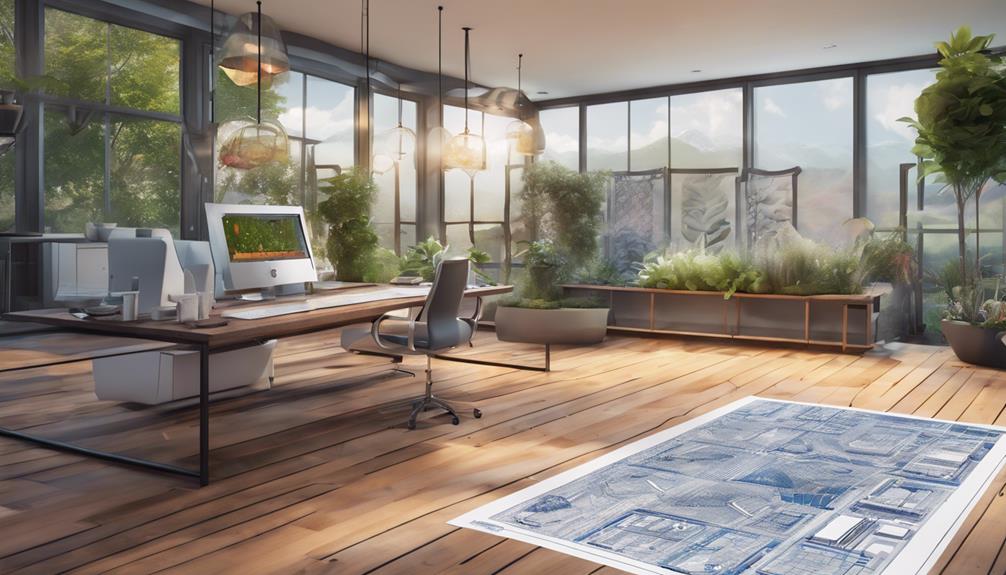
Deck design software is an essential tool for architects and DIY enthusiasts, facilitating the creation of detailed and customized outdoor spaces by providing a variety of functionalities such as 3D visualization, material estimation, and plan exportation. These tools can help seamlessly integrate your deck with the existing architecture and personalize it to the homeowner's style.
Equipped with tools and features like measurement aids, diverse template options, and real-time modification capabilities, these programs enable users to efficiently visualize and modify their projects before construction begins. Accessibility and compatibility are also imperative elements, as leading software guarantees seamless operation across different devices and platforms, catering to both professional environments and personal use.
Purpose and Functionality
A key aspect of modern architectural and landscape design, deck design software serves as an essential tool for professionals and enthusiasts alike. This specialized software facilitates the creation, visualization, and modification of deck layouts, enabling users to bring their creative visions to life with precision and efficiency.
By offering a digital platform to compose intricate designs, these tools help streamline the planning and execution phases of constructing aesthetically pleasing and structurally sound outdoor spaces.
The primary purpose of deck design software lies in its ability to simplify complex design processes, thereby removing traditional barriers associated with manual drafting. This is achieved through intuitive interfaces that guide users in configuring dimensions, selecting materials, and simulating architectural aspects in real time.
Functionality extends beyond mere visualization, offering users the opportunity to test the viability of their designs by operating under realistic constraints such as structural load limits and material durability.
Moreover, deck design software serves as a collaborative medium, allowing for seamless communication between designers, architects, and clients. This collaboration allows all stakeholders to have input in the project's inception and evolution, fostering an environment of shared vision and understanding that is indispensable for successful project delivery.
Tools and Features
Building on the purpose and functionality of deck design software, the tools and features offered by these programs define their utility and effectiveness. These sophisticated applications serve as extensive platforms, enabling users to explore a variety of design possibilities and fully realize their creative visions.
At the heart of these systems lie advanced 3D visualization tools, which empower users to view their prospective deck from virtually any angle, ensuring accurate rendering of dimensions and aesthetics. Seamlessly integrated drag-and-drop interfaces streamline the design process, allowing individuals with varying levels of expertise to construct complex layouts with relative ease.
Additional features include customizable material libraries providing an extensive range of finishes and textures, from wood and composite materials to intricate adornments that facilitate the creation of a deck tailored to personal tastes. Measurement tools, such as rulers and angle adjusters, deliver precision in alignment and dimension, enhancing the professional quality of each project.
Many programs incorporate cost estimation capabilities, offering users necessary financial insights by forecasting material costs based on their selections. Collectively, these features create a robust, user-friendly environment that fosters creativity while maintaining structural accuracy and practical feasibility.
Accessibility and Compatibility
Convenience in access and compatibility largely determines the appeal and utility of deck design software, ensuring it meets the diverse needs of its user base. As home improvement and design have shifted into the digital sphere, accessibility and compatibility have emerged as pivotal factors in user satisfaction and software effectiveness.
Users seek programs that are accessible across multiple platforms, including Windows, macOS, and increasingly popular Linux. The ability to seamlessly integrate with other design or architectural software is also highly desired, enabling a streamlined workflow and enhanced creative capabilities.
Furthermore, the software must support a wide range of devices, from desktops to tablets, thereby providing flexibility in how and where users can design. Lower hardware requirements broaden the appeal by allowing even those with older devices to participate. The challenge lies in meeting these varied needs without sacrificing performance.
- Cross-platform availability: Compatibility with different operating systems like Windows, macOS, and Linux enhances usability.
- Device versatility: Ability to function across desktops, tablets, and sometimes smartphones to provide on-the-go accessibility.
- Integration with other tools: Seamless integration with existing software solutions such as AutoCAD boosts functionality and practical usability.
These elements collectively fortify the software's standing in a competitive market.
Benefits
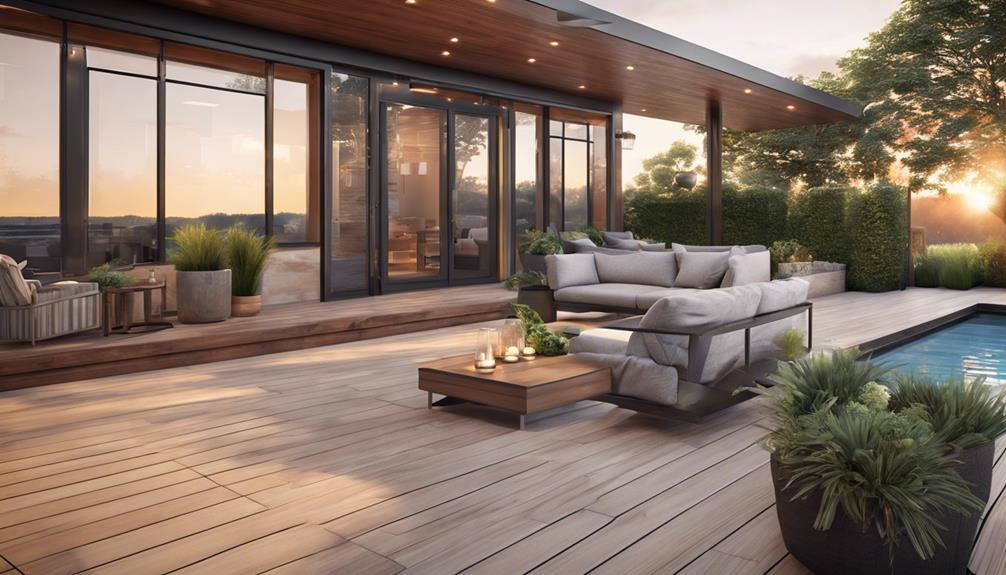
Utilizing advanced deck design software greatly enhances creative possibilities by allowing users to explore a wide range of design variations through intuitive tools and features. This technology streamlines the design process by simplifying complex tasks, thereby reducing the time and effort typically required in traditional methods.
Additionally, the software integrates aspects of custom-designed decks and architecture style, offering seamless customization options. Consequently, it improves planning accuracy and facilitates precise cost estimation, ensuring that projects are executed efficiently while adhering to budget constraints.
Enhances Creative Possibilities
A robust deck design software markedly enhances creative possibilities by enabling users to experiment with various design elements and configurations effortlessly. Such tools empower designers to push boundaries, spurring innovation without the constraints of traditional manual drafting methods. Designers gain the ability to explore a diverse range of styles and materials, integrating intricate patterns and diverse textures that redefine their projects. This flexibility fosters a collaborative environment where ideas flourish and transform into fully realized, bespoke outdoor spaces.
Key features that enhance creative possibilities include:
- Comprehensive libraries of materials and textures: High-quality design software offers access to extensive databases replete with various wood grains, finishes, and even synthetic materials, allowing users to create highly customized, photorealistic representations of their projects.
- 3D visualization tools: By utilizing state-of-the-art rendering engines, users can visualize their decks in three dimensions, experimenting with structural modifications and lighting scenarios to find the ideal design without physical limitations.
- Customization options for specific elements: Advanced editing tools permit the fine-tuning of specific deck components, including railings, steps, and banisters, allowing designers to mold each feature to their creative vision, thereby introducing unique aesthetics and personalized functionality.
Streamlines Design Process
With intuitive interfaces and powerful automation features, deck design software considerably streamlines the design process, providing substantial time-saving benefits to designers and homeowners alike. The incorporation of user-friendly design tools enables users to quickly move from conceptual ideas to detailed plans without the need for extensive technical knowledge. By automating complex calculations and procedures, such software eliminates the traditionally laborious tasks associated with manual drafting.
In addition to facilitating ease of use, these advanced design solutions often incorporate libraries of pre-designed templates and components. This allows users to experiment with various design options with just a few clicks, significantly reducing the time typically required to finalize blueprints. Software capabilities such as drag-and-drop functionalities enable rapid adjustments, allowing users to swiftly test spatial configurations and aesthetic choices.
Moreover, collaboration features integrated within these platforms enhance efficiency by allowing multiple stakeholders to access and modify designs in real-time. This collaborative approach not only accelerates decision-making but also fosters better communication among design teams and clients. By centralizing all design data and revisions, deck design software effectively minimizes the back-and-forth traditionally involved in design alterations, ensuring a more streamlined and harmonious progression from conception to execution.
Improves Planning Accuracy
Through the integration of advanced simulation and measurement tools, deck design software substantially enhances planning accuracy. This enhanced precision is essential for reducing costly errors and ensuring that the final structure aligns with both aesthetic and functional goals.
By empowering users with precise dimensions and high-fidelity simulations, deck design software allows for the meticulous mapping of every aspect, from footing placements to the arrangement of support beams. This enables a thorough visualization of potential layout and spatial arrangements, fostering designs that respect specified constraints and meet client specifications.
In practice, improving planning accuracy involves multiple elements:
- Enhanced Compatibility: Software can integrate with existing architectural blueprints, ensuring seamless cohesion between the deck and the overall structure.
- Dynamic Visualization: Three-dimensional renderings provide realistic impressions of the final product, allowing for intuitive adjustments pre-construction.
- Detailed Reporting: Thorough reports outline precise measurements and potential weak points, facilitating corrective actions before physical work commences.
Ultimately, the precision provided by deck design software reduces the likelihood of unforeseen adjustments during construction. This translates to more efficient project management and ultimately a more satisfactory outcome for all parties involved. Such technological advancements in planning precision not only save time but also contribute considerably to quality assurance in deck construction.
Facilitates Cost Estimation
Accurately determining costs is often a critical component of successful deck construction projects. The ability to estimate expenses with precision ensures that budgets are adhered to, minimizing unexpected financial strain.
Deck design software offers a sophisticated array of tools that facilitate accurate cost estimation, a benefit that cannot be overstated in project management. By integrating detailed material specifications, labor costs, and regional pricing variations, these programs provide users with thorough cost assessments that help in formulating realistic financial plans.
Such software typically includes extensive libraries of materials and components, complete with their market prices. It allows users to build their decks virtually, inputting various design elements to generate a predictive cost analysis automatically. This capability enables potential deck builders to explore multiple design options while understanding their financial implications, thereby optimizing expenditure without compromising on vision or quality.
Additionally, design software can automatically update cost estimations in real time as modifications are made, ensuring that any design evolution does not result in fiscal surprises. This dynamic approach to cost management assists homeowners and contractors alike in efficiently managing the financial aspects of deck construction, enabling informed decision-making and strategic financial planning.
Popular Software User Statistics
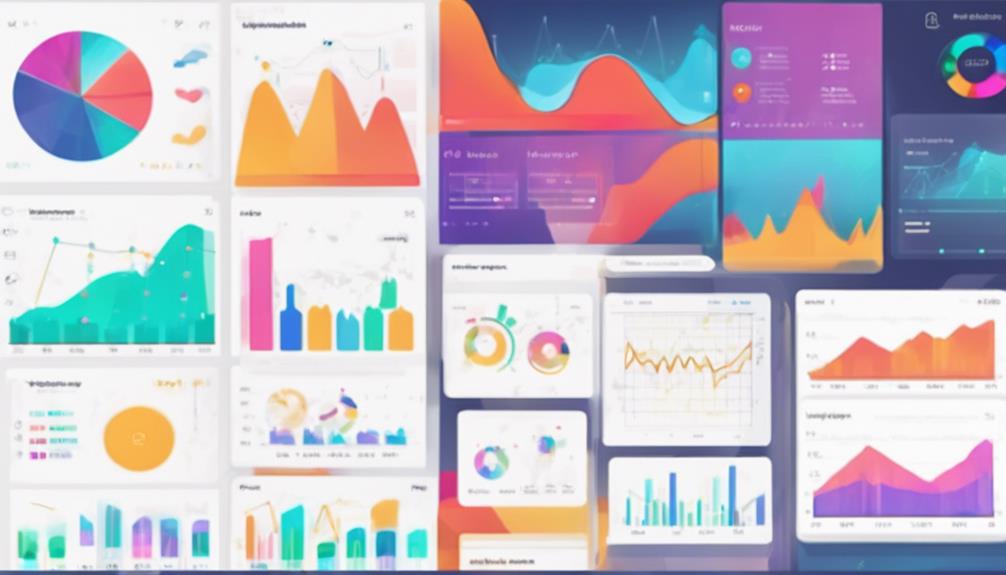
Understanding the user demographics, adoption trends, and engagement metrics of popular deck design software can offer valuable insights into market dynamics and consumer preferences. The following table provides a concise snapshot of these statistics, illustrating varying patterns across different platforms that can influence both software development and marketing strategies:
| Software Name | Average Monthly Users | Demographic Trends |
|---|---|---|
| DeckMaster Pro | 1.5 million | Mainly DIYers |
| EasyDeck Design | 2.0 million | Home improvement enthusiasts |
| BuildADeck 3D | 1.2 million | Professional builders |
| HomeDeck Creator | 2.5 million | Mixed demographics |
These figures reveal not only the scale and diversity of the user base across different applications, but also indicate evolving patterns in user engagement and adoption that may guide future enhancements and positioning within the competitive landscape.
User Demographics Analysis
How do user demographics shape the adoption of deck design software? The demographic profile of users significantly influences the types of features and interfaces that software developers implement. Younger users, typically aged 18-34, demonstrate a preference for applications that integrate seamlessly with other digital tools and offer intuitive, user-friendly interfaces. This segment often appreciates virtual reality capabilities or 3D rendering functions, which enhance their overall designing experience by providing a more immersive interaction.
Key demographic influences on software usage include:
- Age: Younger users prefer interactive and tech-driven features, while more mature users value straightforward, efficient design tools.
- Skill Level: Amateur designers lean towards software with easy-to-follow tutorials and pre-designed templates, whereas professionals often require advanced customization options.
- Purpose of Use: Homeowners typically choose software that accommodates home improvement projects, while commercial users may seek enterprise-level solutions with collaborative features.
Additionally, geographic location plays a role in how deck design software is adopted, as cultural preferences in architectural styles can affect feature requirements. Understanding these demographic factors is pivotal for software developers aiming to optimize user engagement and retention, ensuring that their products not only meet the needs of varied user bases but also anticipate emerging trends in home design innovation.
Adoption Trends Overview
Driven by a dynamic landscape of user preferences and technological advancements, the adoption trends of deck design software reveal a diverse array of popular tools gaining traction among users. These tools cater to a broad spectrum of individuals, from DIY enthusiasts to professional architects seeking intuitive platforms and comprehensive design capabilities.
In recent years, platforms like SketchUp, Deck Designer, and Chief Architect have emerged as frontrunners, thanks to their versatility and depth in features.
SketchUp, renowned for its user-friendly interface and robust 3D modeling capabilities, attracts a broad demographic, particularly those new to digital design. Its integration with various plugins enhances its functionality, making it a preferred option across various user groups.
Deck Designer, in contrast, is celebrated for its focused approach; simplifying the deck planning process with an emphasis on ease of use. This software's appeal lies in its streamlined workflow, attracting novices keen to commence home improvement projects.
Meanwhile, Chief Architect boasts intricate design tools perfect for professionals requiring detailed renderings and advanced customization options. Its ability to produce high-fidelity visualizations aligns well with architectural demands, thus solidifying its stronghold among industry practitioners.
Collectively, these applications illustrate the evolving landscape of deck design software.
Engagement Metrics Insights
What insights can be gleaned from the engagement metrics of popular deck design software? Understanding engagement metrics provides valuable information about how users interact with these applications, reflecting preferences, pain points, and usability factors. By analyzing these metrics, one can identify features that resonate well with users and ascertain areas needing improvement. Comprehensive user engagement statistics also reveal patterns that can predict future trends or shifts in user expectations.
In examining the engagement metrics of leading deck design tools, several intriguing insights emerge:
- Active Session Duration: Users spending extended periods within the application tend to indicate satisfaction and usability, suggesting intuitive interfaces and design efficiencies that support creativity and productivity.
- Feature Utilization Rates: High utilization rates of particular features point to their value and efficiency, pushing developers to prioritize enhancements or focus on similar functionalities in future updates.
- User Retention: Consistently high retention rates across software versions reflect user satisfaction and loyalty, often driven by regular feature updates and responsive customer support.
These insights guide software developers in refining their products and targeting user need alignment, fostering enhanced user experiences and increased adoption. As a result, understanding and leveraging engagement metrics is essential in developing deck design software that effectively meets user demands.
Decks FAQ
Is There Deck Design Software Available for Beginners With No Prior Experience?
Certainly, several deck design software options cater to beginners. These user-friendly platforms offer intuitive interfaces with drag-and-drop features, aiding individuals with no prior experience in creating functional and aesthetically pleasing deck designs efficiently.
Does Any Deck Design Software Offer Virtual Reality Features?
Yes, certain deck design software integrates virtual reality features, enabling users to visualize their designs in an immersive experience. Such functionalities enhance spatial understanding and provide a more thorough perspective on deck layout before construction.
Are There Deck Design Programs Compatible With Mac Systems?
Several deck design software options are compatible with Mac systems, including SketchUp and Home Designer Professional. These programs offer robust tools for designing, customizing, and visualizing deck projects, catering to both amateur enthusiasts and seasoned professionals.
Can I Use Deck Design Software to Estimate Material Costs?
Yes, numerous deck design software platforms include features for estimating material costs. They provide detailed calculations based on design specifications, aiding in budget planning by offering cost projections for materials, labor, and other associated expenses.
Do These Software Options Allow Collaboration With Other Designers in Real-Time?
Several deck design software solutions provide real-time collaboration features, allowing multiple designers simultaneous access and modification capabilities. This fosters a seamless cooperative process, enhancing productivity and ensuring consistency throughout the project's developmental stages.

